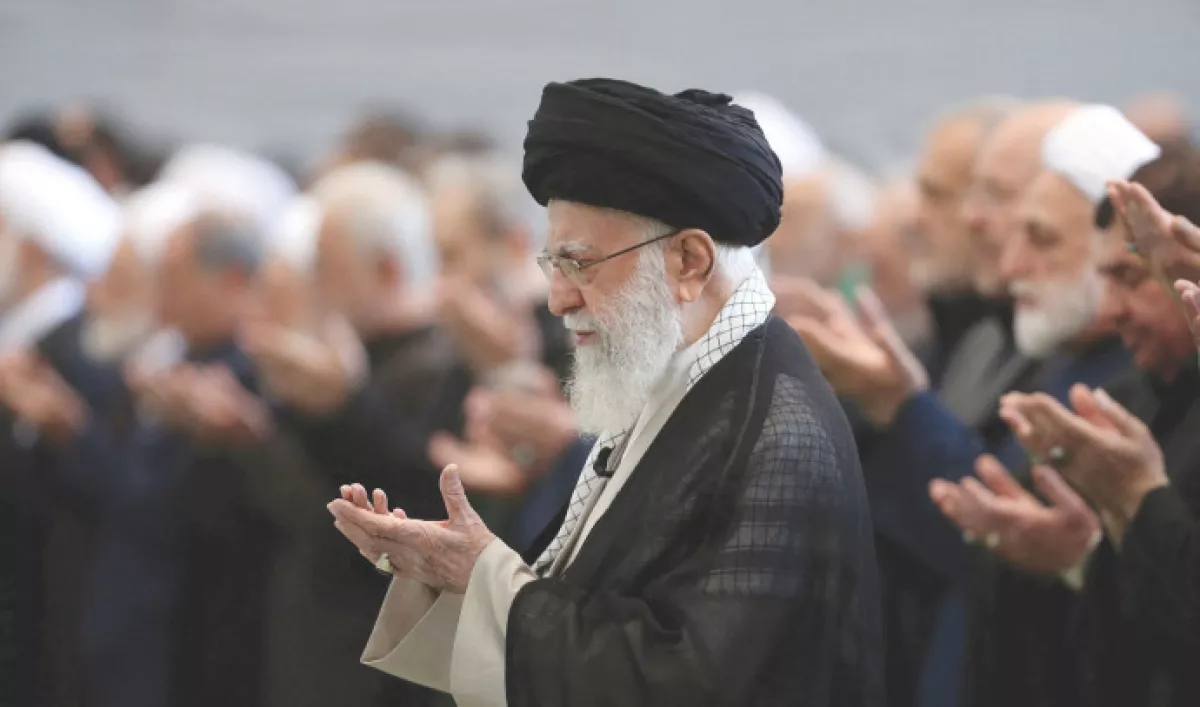Mojtaba Khamenei - Iran's heir in waiting? An article by Foreign Affairs
Iran experts have been routinely releasing rumours into the open about the demise of Supreme Leader Ali Khamenei, who is now 85 years old. When a meeting of the Islamic Republic’s Assembly of Experts was postponed in 2024 from September to November, some speculated that the leader, who has battled cancer in the past, was on his death bed. Generally speaking whenever Khamenei disappears for too long, many are convinced that the supreme leader has already died. Despite ongoing speculation about his health and succession, he does remain in power but given his age and health history, his reign is inevitably nearing its end. This means the Assembly of Experts will soon have to appoint a new leader and with a politically and religiously divided society like Iran, the choice is not straightforward as Khamenei has not officially designated a successor.
Many believe that his son, Mojtaba Khamenei, is increasingly emerging as the leading candidate even though hereditary rule contradicts Shiite political theology, which emphasizes religious qualifications over lineage. An article by Foreign Affairs points to the 56-year-old cleric's significant political influence, who has been quietly maneuvering within Iran’s power structure. His allies have portrayed him as both a qualified Islamic jurist and a modernizer capable of addressing the country’s economic struggles and political unrest.
In Shiite theology, the authority of imams stems from divine duty, not from inheritance. Even Ruhollah Khomeini, Iran’s first supreme leader, appealed to this principle when he blocked his own overambitious son, Ahmed, from succeeding him in the late 1980s. Even Khamenei himself once opposed monarchical succession, mocking the monarchical systems in January 1990 of transfering sovereignty from a king to his son. Yet recent efforts to frame Mojtaba as a legitimate cleric suggest a shift in his stance.
Despite attempts to bolster Mojtaba’s religious credentials, there is little evidence that he meets the constitutional requirements for supreme leadership. He has not published significant theological works, his teachings remain unpublished, and he has made few public appearances. Nevertheless, his supporters argue that his leadership could reinvigorate Iran’s stagnant government. Some even compare him to Saudi Crown Prince Mohammed bin Salman (MBS), implying he could implement reforms while maintaining control. Notably, the article highlights that Iranian security forces have not objected to this comparison, even though the Islamic Republic has routinely vilified the crown prince as being anti-Islamic and corrupt.
However, neither MBS nor Mojtaba are human rights advocating, minority-friendly liberals, with the Iranian leader's son having amassed a long history of political interference in which he often backed hard-liners. He played a crucial role in undermining reformist President Mohammad Khatami in the late 1990s, orchestrating the suppression of reformist media and activists. In 2005, he allegedly manipulated the presidential election to secure victory for controversial Mahmoud Ahmadinejad over Khamenei Senior’s preferred candidate, Sadeq Larijani. His involvement in election rigging and political crackdowns suggests that, if he becomes supreme leader, Iran’s repressive policies will likely continue.

Mojtaba’s succession is far from being guaranteed yet. Khamenei has previously sidelined front-runners like Larijani in 2005, and former Iranian President Ebrahim Raisi. The latter fell out of Khamenei’s favor as his presidency floundered prior to his sudden death in a May 2024 helicopter crash. Experts believe that Khamenei could ultimately endorse other senior officials, with many pointing to Ali Asghar Hejazi, the chief of security in the supreme leader’s office. According to the article, Hejazi is the official Khamenei appears to trust the most and the only to attend all of Khamenei’s private meetings. Yet most of these "dark horses" that could be in the race to become Iran's next leader share Khamenei’s hard-line ideology, making significant policy shifts unlikely regardless of who takes power.
Iran faces deep social and political unrest, with a population increasingly demanding democracy, human rights, and greater freedoms. The article recalls that Iran has a highly educated population with an intensely critical society. Outside information is nowadays increasingly available, bypassing attempts of censorship. Nearly every major book that is published, shockingly even those by Israeli novelists as was the case with Yuval Noah Harari, is swiftly translated into Persian. The country has experienced mass protests in 1999, 2009, 2017, 2019, and 2022, signaling widespread dissatisfaction with the regime as a whole. The next supreme leader will inherit this volatile environment, and maintaining clerical rule will require both repression and limited concessions. However, Iranians are becoming more assertive, with political prisoners and activists using technology to organize and spread dissent.
Western governments could play a role in shaping Iran’s future by reviewing harsh economic sanctions. While these measures are aimed at weakening Tehran, they have primarily harmed ordinary Iranians, consolidating state power and stifling civil society. Lifting sanctions could empower citizens economically, providing them with the resources needed to push for political change. As Iran transitions to a new leadership, external policies that strengthen its people rather than just punish its government could be crucial in shaping the country’s trajectory.
By Nazrin Sadigova








